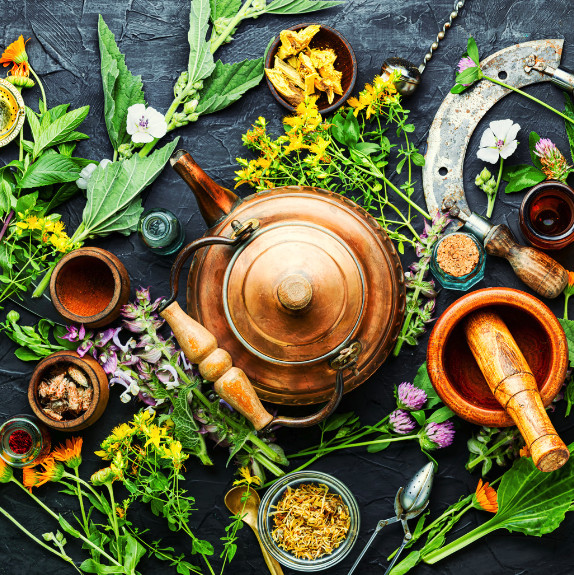
Welcome to the world of Polarity Therapy, where the power of touch and energy flow come together to promote holistic healing and balance. In this introduction, we will explore the principles and benefits of this unique and effective form of therapy.
Polarity Therapy is based on the belief that energy flows through our bodies in specific patterns and can become imbalanced, leading to physical, emotional, and mental dis-ease. By identifying and addressing these energy blockages, Polarity Therapy aims to restore harmony and vitality.
With a focus on accessing and enhancing the body's natural energy fields, Polarity Therapy incorporates a combination of bodywork, energetic techniques, and nutritional guidance. Practitioners use gentle touch, pressure, and manipulation to release tension, promote relaxation, and stimulate the body's natural healing abilities.
The benefits of Polarity Therapy are vast and may include reduced pain and stress, increased energy and vitality, improved digestion and sleep, and enhanced overall well-being. This therapy aims to not only alleviate symptoms but also address the root causes of imbalance.
Whether you're new to energy healing or seeking alternative approaches to wellness, Polarity Therapy offers a gentle yet powerful path to restoring harmony and promoting optimal health. With its holistic approach and emphasis on energy flow, this therapy is a valuable tool in today's fast-paced world.
What is Polarity Therapy?
Polarity Therapy is a holistic healing system that emphasizes the balance of energy flow in the human body. It integrates bodywork, diet, exercise, and self-awareness to support health and wellness. Developed in the early 20th century by Dr. Randolph Stone, Polarity Therapy combines Eastern medicine concepts with Western health science to offer a comprehensive approach to well-being.
The therapy is grounded in the understanding that life energy patterns exist within and around us, and that disease or discomfort can arise from energy imbalances. Through various techniques, including soft touch, stretching, and verbal guidance, practitioners aim to balance the body's energy flow.
Polarity Therapy views the human being as a complex of energetic fields that interact with the physical and mental aspects of the individual. By addressing not just the symptom but the source of imbalance, it provides a path to lasting health and vitality.
The History and Origins of Polarity Therapy
The roots of Polarity Therapy trace back to the comprehensive work of Dr. Randolph Stone, who was a chiropractor, osteopath, and naturopath. Dr. Stone spent his life studying the body's subtle energies and their influence on health, drawing knowledge from traditional Indian Ayurvedic medicine, Chinese medicine, and ancient Egyptian health practices.
He observed that health issues stem from energy blockages within the body and that restoring energy flow could heal these ailments. After decades of research and practice, Dr. Stone developed Polarity Therapy in the 1940s as a synthesis of his learning and experiences.
The legacy of Dr. Stone's work is a therapeutic practice that transcends cultural and historical boundaries, offering a universal approach to health and healing that is as relevant today as it was during its inception.
The Principles of Polarity Therapy
Polarity Therapy is based on five fundamental principles: the five elements (Ether, Air, Fire, Water, and Earth), three principles of energy (positive, negative, and neutral), energy fields and centers, energy pathways, and the processes of energy exchange and balance.
These principles help to understand how energy moves and interacts within the body and the universe. They guide practitioners in their approach to treatment, enabling them to identify imbalances and facilitate the body's innate healing capability.
By recognizing the interconnectedness of all life and the importance of balance in health, these principles form the foundation of Polarity Therapy's holistic approach.
The Energy Systems in Polarity Therapy
Polarity Therapy identifies three primary energy systems within the body: the Long Line Currents that run north to south in the body, the Transverse Currents that run east to west, and the Spiral Currents that move in circular patterns. These systems represent the pathways through which life energy flows and interacts.
Disruptions or blockages in these energy flows can lead to physical, emotional, or mental health issues. By working with these systems, practitioners aim to restore balance and facilitate the body's natural healing processes.
Understanding these energy systems allows therapists to apply specific techniques tailored to each individual's needs, offering a personalized approach to wellness.
Benefits of Polarity Therapy
The benefits of Polarity Therapy are wide-ranging and can impact every aspect of an individual's health. It can help reduce stress and anxiety, alleviate pain, improve digestion and circulation, boost the immune system, and enhance overall energy and vitality.
By fostering a deep sense of relaxation, Polarity Therapy can also promote mental and emotional well-being, helping individuals to manage emotions more effectively and gain a clearer, more balanced perspective.
Moreover, because Polarity Therapy addresses the root causes of imbalance rather than just symptoms, it can lead to long-term health improvements and a greater sense of harmony in life.
Polarity Therapy Techniques and Practices
Polarity Therapy incorporates a diverse range of techniques, including bodywork, stretching exercises, nutritional counseling, and verbal guidance. Bodywork involves gentle touch, rocking, stretching, and pressure to specific points to release tension and restore energy flow.
Practitioners may also recommend specific exercises and dietary adjustments to support the individual's overall health and energy balance. These practices are designed to empower individuals to take an active role in their healing process.
Additionally, Polarity Therapy emphasizes the importance of awareness and mindfulness in understanding one's energy patterns and cultivating a balanced lifestyle.
Polarity Therapy and Holistic Health
Polarity Therapy is a key component of holistic health, which considers the whole person — body, mind, and spirit — in the pursuit of optimal health and wellness. By integrating physical, emotional, and energetic aspects, Polarity Therapy offers a comprehensive approach to healing.
It complements other holistic practices and can be used alongside conventional medical treatments to enhance well-being. This integrative approach ensures that individuals receive personalized care tailored to their unique needs and circumstances.
In today's fast-paced world, where stress and imbalance are common, Polarity Therapy provides a vital tool for maintaining health, preventing illness, and achieving a higher quality of life.
How to Become a Polarity Therapy Practitioner
For those passionate about holistic health and healing, adding Polarity Therapy to your services can be a rewarding career path that makes a positive impact on the lives of others.
Conclusion: The Future of Polarity Therapy
As awareness of holistic and energy medicine grows, Polarity Therapy is poised to play an increasingly significant role in the field of health and wellness. With its comprehensive approach to healing and emphasis on balance and harmony, Polarity Therapy offers a powerful tool for addressing the complexities of modern life.
Whether you're exploring energy healing for the first time or are a seasoned practitioner, Polarity Therapy offers a path to deeper health, well-being, and vitality. Embracing the principles and practices of Polarity Therapy can lead to transformative changes, not just in physical health, but in every aspect of life.
Curious about courses in Polarity and Marma Therapy?? Become specialized in this unique modality that is in high demand.

Hidden beneath your skin lies an intricate network of 107 vital energy points that ancient Indian healers discovered thousands of years ago. These points form the foundation of marma therapy, a powerful healing practice that has survived and thrived through centuries.
Marma therapy combines precise touch, pressure, and energy work to unlock your body's natural healing abilities. As a specialized branch of Ayurvedic marma massage, this therapeutic approach addresses both physical ailments and emotional imbalances by targeting specific energy points throughout your body.
This comprehensive guide explores the principles, benefits, and practical applications of marma therapy. You'll discover how to incorporate this ancient healing system into your modern wellness routine, whether through professional treatments or self-practice techniques.
Understanding the Ancient Science of Marma Therapy
The ancient science of marma therapy emerged from an unexpected source - the battlefields of ancient India. Warriors and physicians developed this knowledge not just for combat but also for healing 1. This dual nature of marma points - their potential to both harm and heal - makes them uniquely powerful in Ayurvedic medicine.
Origins and Evolution of Marma Therapy
Marma therapy's roots trace back to 4000 BC in the Vedic period 1. Initially documented in ancient texts like the Sushruta Samhita, this healing art evolved from martial knowledge into a sophisticated therapeutic system. The science was so valued that it earned the title of "half the knowledge of surgery" in Ayurvedic medicine 2.
The 107 Vital Energy Points
The human body contains 107 marma points, each serving as a critical junction where various tissues converge 3. These points are classified based on their anatomical composition:
- Muscle and vessel intersections
- Bone and ligament junctions
- Nerve pathway convergences
- Organ and tissue connections
Connection to Ayurvedic Principles
Marma points function as cosmic switchboards connecting your inner and outer environments 4. They serve as pathways for prana (life force) through 72,000 energy channels called nadis 4. Each point influences specific aspects of physical and mental well-being, working in harmony with the three doshas - Vata, Pitta, and Kapha 5.
When these points are gently stimulated through therapeutic touch, they activate the body's natural healing mechanisms 3. This stimulation helps clear energy blockages, restore balance, and promote overall wellness. Modern practitioners use this ancient knowledge to address both physical ailments and emotional imbalances, making marma therapy a truly holistic healing approach.
Key Benefits and Healing Applications
The therapeutic power of marma therapy extends far beyond its ancient origins, offering a spectrum of benefits that address modern wellness challenges. Let's explore how this time-tested practice can enhance your physical, mental, and spiritual well-being.
Physical Healing and Pain Relief
Marma therapy excels in managing various types of physical discomfort. The gentle manipulation of marma points helps release energy blockages, providing relief from musculoskeletal pain and joint issues 6. This therapeutic approach improves blood circulation and lymphatic drainage, supporting your body's natural healing processes 7. Studies show that marma therapy can effectively reduce chronic pain conditions while promoting tissue repair 8.
Mental and Emotional Balance
In today's fast-paced world, mental wellness is crucial. Marma therapy offers remarkable emotional benefits through its calming techniques. When specific marma points are stimulated, they trigger the release of neurochemicals like serotonin and melatonin, enhancing cognitive function and promoting better sleep 8. The therapy has shown significant results in:
- Reducing anxiety and stress levels
- Improving emotional stability
- Enhancing mental clarity and focus
- Supporting better sleep patterns 9
Energy Flow and Spiritual Wellness
At its core, marma therapy works by balancing your body's vital energy (prana). This balance creates profound effects on overall wellness 10. The therapy helps remove energy blockages, much like clearing a dam in a river, allowing energy to flow naturally through your system 10. Regular sessions can boost your vitality, improve organ function, and enhance your body's natural healing abilities 7.
The beauty of marma therapy lies in its holistic approach - while addressing physical ailments, it simultaneously works on emotional and energetic levels. This integration of healing makes it particularly effective for those seeking comprehensive wellness solutions in our modern world.
Essential Marma Treatment Techniques
Mastering marma therapy requires understanding both professional techniques and self-care practices. Let's explore the essential methods and tools that make this ancient healing art effective in modern times.
Professional Therapy Methods
Professional marma therapy begins with creating a peaceful environment conducive to healing 11. Certified therapists use precise, gentle circular motions and light pressure to stimulate marma points 12. These treatments typically incorporate warm, medicated oils applied to specific areas including chakras and marma points 13. A professional session focuses on releasing blocked energy while promoting deep relaxation through careful manipulation of these vital points.
Self-Treatment Practices
You can practice basic marma therapy at home using simple techniques. Here's how to get started:
- Use fingertips to apply gentle clockwise circular motions
- Massage each point for 3-5 minutes 10
- Practice in a quiet space with warm hands
- Focus on your breathing during treatment
Tools and Oils Used in Marma Therapy
The effectiveness of marma therapy often relies on specialized tools and oils. The Marma Acupressure Stick, featuring both pointed and rounded tips, allows precise stimulation of energy points 14.
Essential oils play a crucial role in enhancing therapeutic effects. Popular options include:
- Vata-soothing oils: Warming and calming, featuring anise, cinnamon, and cedar 15
- Pitta-balancing oils: Cool and sweet, including rose, sandalwood, and mint 15
- Kapha-balancing oils: Light and stimulating, containing warming and spicy elements 15
These oils are typically combined with base carriers like sesame, almond, or coconut oil for optimal absorption 15. When selecting oils, practitioners often let clients sample different blends, following the principle that your preferred scent is usually the most beneficial for your body 16.
Integrating Marma Therapy into Daily Wellness
Making marma therapy a part of your daily wellness routine can amplify its healing benefits. Whether you're new to this ancient practice or looking to deepen your experience, here's how to create a sustainable approach to marma therapy.
Creating a Marma Treatment Schedule
A typical marma therapy session lasts about an hour, with treatments recommended weekly or as needed based on your condition 17. For optimal results, schedule your sessions 30 minutes after meals, allowing 20-25 rounds of gentle stimulation for each point 18. This timing helps maximize the therapy's effectiveness while ensuring your body is properly nourished.
Combining with Other Healing Practices
Marma therapy works beautifully alongside other wellness practices. It particularly complements:
- Yoga and meditation for enhanced energy flow
- Traditional Ayurvedic treatments
- Herbal medicine and dietary modifications 19
The combination of marma therapy with yoga is especially powerful, as yoga postures naturally align with marma points, creating a synergistic effect on your body's energy system 20.
Safety Guidelines and Precautions
Important Safety Considerations: Before starting marma therapy, be aware of these essential precautions 17:
- Avoid treatment if you have fever, recent fractures, or contagious skin conditions
- Consult your doctor first if you have heart disease, cancer, or varicose veins
- Pregnant women should work only with experienced practitioners
- Ensure your practitioner knows about any medications you're taking
For self-treatment, apply 6-8 pounds of pressure on marma points, being gentler on soft areas and firmer on hard areas 18. Remember that while some tenderness is normal, excessive pain indicates you should ease up on pressure.
When practiced mindfully, marma therapy can become a cornerstone of your daily wellness routine, offering both immediate relief and long-term benefits for your physical and emotional well-being.
Conclusion
Marma therapy stands as a remarkable bridge between ancient wisdom and modern wellness needs. This powerful healing system, built on the foundation of 107 vital energy points, offers a complete approach to health that addresses physical ailments while nurturing emotional and spiritual well-being.
Professional treatments and self-care practices make this ancient science accessible to everyone seeking natural healing solutions. Regular marma therapy sessions, whether through a certified practitioner or mindful self-practice, can lead to noticeable improvements in pain relief, stress reduction, and overall vitality.
Starting with gentle techniques and proper safety considerations, you can gradually build marma therapy into your wellness routine. Combined with complementary practices like yoga and meditation, this time-tested healing art becomes a powerful tool for maintaining balance in body, mind, and spirit.
Are you inspired to learn Marma Therapy?? Learn more here.
References
[1] - https://www.researchgate.net/publication/369742798_A_Historical_Review_on_Literature_of_Marma_Science_-_An_Ancient_Healing_Technique
[2] - https://www.wjpmr.com/download/article/110062023/1688090952.pdf
[3] - https://ayurda.com/blogs/ayurvedic-health/unlocking-vital-energy-the-power-of-marma-points-in-ayurveda?srsltid=AfmBOor66bf6TDxWjGpbrbfWOFiLllDCzWsw8pur7R3-NLXGUJ-6Dnes
[4] - https://marmatherapy.org/who-invented-marma-therapy/
[5] - https://www.balancespa.ae/blogs/exploring-the-roots-of-marma-therapy-in-ancient-ayurvedic-texts
[6] - https://www.netmeds.com/health-library/post/marma-therapy-what-is-it-types-and-benefits-to-promote-energy-flow-and-healing?srsltid=AfmBOorA58Y9kOTqDeVcJnarTgbBsPfu3Hhr29ZwaYRcwJ7gcPB6Hq1Z
[7] - https://ayurda.com/blogs/ayurvedic-health/unlocking-vital-energy-the-power-of-marma-points-in-ayurveda?srsltid=AfmBOoogdjJ_tKG_m2SRXoMyDWXFFvyapV8cqdMAtDLFG86m7Oq_Vtac
[8] - https://journals.lww.com/ayuh/fulltext/2022/09010/exploring_the_scientific_potential_of_marma.4.aspx
[9] - https://www.ayurvedacollege.net/blogs/the-spiritual-connection-how-marma-training-in-kerala-enhances-holistic-wellness
[10] - https://www.keralaayurveda.us/courses/blog/marma-101-the-oldest-touch-therapy-for-energy-healing/
[11] - https://www.netmeds.com/health-library/post/marma-therapy-what-is-it-types-and-benefits-to-promote-energy-flow-and-healing?srsltid=AfmBOoo7AXVAKv1QQh0tKvGjHCZT1NI_1kSdkuC-QkgKepv4lWmXxrlX
[12] - https://www.healthline.com/health/marma
[13] - https://www.ayurhitam.com/best-marma-chikitsa-in-us/
[14] - https://www.marmatraining.com/marma-products/marma-essentials-collection
[15] - https://marmatreatment.panchakarmacentre.co.uk/choosing-the-right-oil-for-sukshma-marma-therapy/
[16] - https://marmatherapy.org/essential-oils-in-marma-therapy/
[17] - https://drpalikuttysayurveda.com/health-reads/marma-chikitsa-a-guide-to-ayurvedic-vital-point-therapy
[18] - https://www.planetayurveda.com/library/marma-therapy/?srsltid=AfmBOooxahBeMkM7-EEzvegdq4gsiuZDd8jWv5Hv4L9_1vZM4fDkSM4G
[19] - https://www.bodhiholistichub.com/guides/natural-medicine/marma-therapy
[20] - https://www.wisdomlib.org/science/journal/world-journal-of-pharmaceutical-research/d/doc1376476.html
[2] - https://www.wjpmr.com/download/article/110062023/1688090952.pdf
[3] - https://ayurda.com/blogs/ayurvedic-health/unlocking-vital-energy-the-power-of-marma-points-in-ayurveda?srsltid=AfmBOor66bf6TDxWjGpbrbfWOFiLllDCzWsw8pur7R3-NLXGUJ-6Dnes
[4] - https://marmatherapy.org/who-invented-marma-therapy/
[5] - https://www.balancespa.ae/blogs/exploring-the-roots-of-marma-therapy-in-ancient-ayurvedic-texts
[6] - https://www.netmeds.com/health-library/post/marma-therapy-what-is-it-types-and-benefits-to-promote-energy-flow-and-healing?srsltid=AfmBOorA58Y9kOTqDeVcJnarTgbBsPfu3Hhr29ZwaYRcwJ7gcPB6Hq1Z
[7] - https://ayurda.com/blogs/ayurvedic-health/unlocking-vital-energy-the-power-of-marma-points-in-ayurveda?srsltid=AfmBOoogdjJ_tKG_m2SRXoMyDWXFFvyapV8cqdMAtDLFG86m7Oq_Vtac
[8] - https://journals.lww.com/ayuh/fulltext/2022/09010/exploring_the_scientific_potential_of_marma.4.aspx
[9] - https://www.ayurvedacollege.net/blogs/the-spiritual-connection-how-marma-training-in-kerala-enhances-holistic-wellness
[10] - https://www.keralaayurveda.us/courses/blog/marma-101-the-oldest-touch-therapy-for-energy-healing/
[11] - https://www.netmeds.com/health-library/post/marma-therapy-what-is-it-types-and-benefits-to-promote-energy-flow-and-healing?srsltid=AfmBOoo7AXVAKv1QQh0tKvGjHCZT1NI_1kSdkuC-QkgKepv4lWmXxrlX
[12] - https://www.healthline.com/health/marma
[13] - https://www.ayurhitam.com/best-marma-chikitsa-in-us/
[14] - https://www.marmatraining.com/marma-products/marma-essentials-collection
[15] - https://marmatreatment.panchakarmacentre.co.uk/choosing-the-right-oil-for-sukshma-marma-therapy/
[16] - https://marmatherapy.org/essential-oils-in-marma-therapy/
[17] - https://drpalikuttysayurveda.com/health-reads/marma-chikitsa-a-guide-to-ayurvedic-vital-point-therapy
[18] - https://www.planetayurveda.com/library/marma-therapy/?srsltid=AfmBOooxahBeMkM7-EEzvegdq4gsiuZDd8jWv5Hv4L9_1vZM4fDkSM4G
[19] - https://www.bodhiholistichub.com/guides/natural-medicine/marma-therapy
[20] - https://www.wisdomlib.org/science/journal/world-journal-of-pharmaceutical-research/d/doc1376476.html

Indulge in a treat that's both delicious and nourishing with these adaptogenic, ayurvedic, and protein-packed energy bites. Packed with almonds, pumpkin seeds, and sunflower seeds, these bites provide a healthy dose of nutrients. They're sweetened with your choice of honey, maple syrup, or date syrup, according to your dosha type, ensuring a personalized touch to your snack.
The addition of tahini, ghee or coconut oil, and a blend of spices like cinnamon, ginger, and cardamom, together with ashwagandha and cacao powder, creates a flavorful and health-boosting combination. Simply blend the ingredients into a rough paste, form into balls, and optionally coat them in shredded coconut for added texture. Store your creations in the fridge or freezer to enjoy a cool, satisfying treat after your next workout session.

Enhance your coffee experience with an Ayurvedic twist that not only improves flavor but also mitigates the adverse effects associated with caffeine consumption. By incorporating grass-fed ghee, rich in vitamin A for adrenal and thyroid support, and coconut oil, which offers soothing, stable saturated fats, you can transform your coffee into a nourishing beverage that protects your stomach lining and nerves.
This Ayurvedic booster aligns perfectly with the energetic needs of Vata types, enabling them to enjoy coffee without over-stimulating their system. The blend of fats in this preparation helps "time-release" caffeine, providing a steady flow of energy without the typical caffeine crash. With roasted dandelion complementing the coffee's flavor while supporting the liver, this blend offers a holistic approach to coffee consumption.
Adding spices like cinnamon, cardamom, and rose lends a cooling effect to counterbalance coffee's natural heat, while adaptogens like ashwagandha and shatavari support adrenal health and the nervous system. This versatile concoction isn’t limited to just coffee; it's an ideal addition to tea, snacks, and even desserts, allowing you to enjoy its benefits across various dietary delights. Explore this innovative recipe to savor the complex flavor while nurturing your body.

"Seasons, Cycles, & Rhythms: Sustaining Health with Ayurveda" explores the holistic approach of Ayurveda, a medical science intertwined with divine wisdom that focuses on disease prevention and maintaining balance in body, mind, and spirit. By understanding one's constitution, which is a unique combination of the three doshas (Vata, Pitta, and Kapha), individuals can tailor their lifestyle to remain in harmony with the natural rhythms of seasons and the environment. This constitution and dosha knowledge is essential as it guides dietary, sleep, and exercise routines for optimal health.
The philosophy behind Ayurveda emphasizes that everything taken in by the five senses, not just food, affects our health. The modern age's overstimulation from technology and constant activity often disrupts our connection to natural cycles, leading to imbalances that manifest as various health issues, such as colds or allergies during seasonal changes. Ayurveda provides guidelines for living in harmony with nature, promoting routines that align with our unique constitution, ultimately achieving holistic well-being.
By aligning with Ayurvedic practices, individuals are encouraged to cultivate self-awareness, self-care, and embrace routines that align with the natural world. This empowers them to manage the accumulation and aggravation of doshas through mindful lifestyle choices. For those interested in integrating Ayurveda into their lives, seeking guidance from an Ayurvedic Wellness Counselor is a recommended step to better understand their personal constitution and embark on a path toward vibrant health.
Read more...








